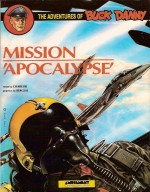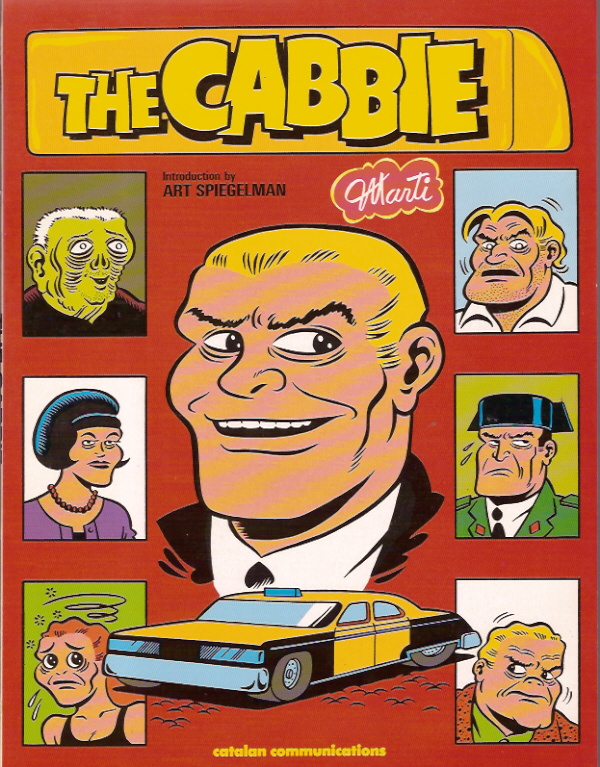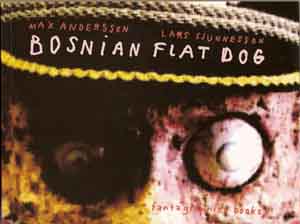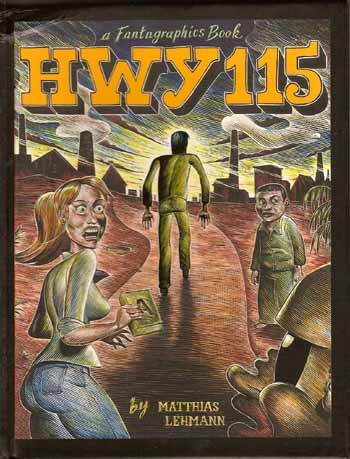
By Jean-Michel Charlier & Francis Bergése (Amusement International Limited)
No ISBN
In advance of the imminent release of a fully translated series from Cinebooks I’m highlighting this brave oddity from the late 1980s; one of many attempts to bring the fabulous wealth and variety of European comics to the infamously resistant New World.
The strip was actually created by Georges Troisfontaines and drawn by drawn by Victor Hubinon (who worked on it until his death in 1978) before being handed to Jean-Michel Charlier, then working as a junior artist. Troisfontaines was director of the Belgian publisher World Press Agency. Charlier’s fascination with human-scale drama and rugged realism had been seen in such strips as L’Agonie du Bismark (‘The Agony of the Bismark’), a “true-war” tale published in Spirou in 1946.
As well as going on together to create Tarawa Atoll Sanglant (‘Tarawa, Bloody Atoll’ 1948-1949), Charlier devised such landmark features as ‘Tanguy and Laverdure’ (with Uderzo and later Jijé), ‘Barbe-Rouge’ (with Hubinon) and ‘Jacques le Gall’ (with MiTacq).
With fellow master-storytellers Albert Uderzo and René Goscinny, he formed the Édifrance Agency, which promoted and specialised in communication arts and comics strips. Charlier and Goscinny were edited Pistolin magazine (1955 to 1958) and created Pilote magazine in 1959.
His greatest triumph is the iconic Western series Blueberry (created in 1963 with Jean Giraud/Moebius). Four years before his death in 1989 Charlier expanded the feature by developing with artist Colin Wilson ‘La Jeunesse de Blueberry’ which explored the boyhood of Europe’s most memorable cowboy. He wrote Buck Danny until his death whereupon his artistic collaborator Francis Bergése (who had replaced Hubinon in 1978) took sole charge of the adventures of the American Air Ace.
Buck Danny premiered in the legendary magazine Spirou in January 1947 and continues to this day. The strip describes the improbably long and historically pivotal career of the eponymous US Navy pilot and his two comrades Sonny Tuckson and Jerry Tumbler. It is one of the world’s last aviation strips and a series which has always closely wedded itself to current affairs such as The Korean War, Bosnia and even Afghanistan.
Operation ‘Apocalypse’ (the first of two parts – although I’m unsure if the second was ever published in English) is a fast-paced yarn of terrorism and intrigue with a fiendish plan initiated to use hijacked atom bombs and a flight of stolen Grumman F-14 Tomcats to destroy Western Civilisation. Like all the Danny tales it is awesomely authentic: a breezy and compelling action thriller and although this particular edition suffers from a rushed and ill-favoured translation and poor hand lettering the vivacity and power of the artwork is quite stunning.
Hopefully the new edition from Cinebooks will correct all these minor glitches, bur since Operation ‘Apocalypse’ is the 40th of the 51 albums published to date it may be awhile before we see it in restored glory even if the company starts from the present and works its way back to WWII…
© 1988 Novedi, Brussels. All Rights Reserved.



